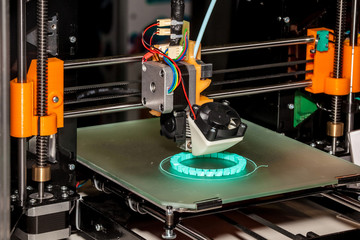3D printing has revolutionized the manufacturing industry by allowing for the creation of complex and intricate parts with ease. However, one common hurdle that arises when using this technology is the removal of supports from 3D printed parts.
Supports are structures that provide stability and prevent deformations during the printing process, but they need to be removed afterwards for a clean final product.
In this blog post, we will explore the common challenges faced in removing supports and discuss effective solutions.
Common Challenges in Removing Supports
Adhesion and strength of supports
Supports are designed to be sturdy and provide stability during the printing process. However, their strength can make them difficult to remove. The adhesion between the support material and the printed part can be strong, leading to potential damage if not handled properly.
Complex geometries and intricate designs
3D printing allows the creation of intricate designs and complex geometries that would be challenging to produce through traditional manufacturing methods. While these designs are impressive, they often require supports in areas with overhangs or unsupported sections. Removing supports from such intricate designs can be time-consuming and tedious.
Support removal in delicate or fragile parts
Certain 3D printed parts may have delicate or fragile sections that require extra care during support removal. These parts are susceptible to damage or breakage if not handled delicately.
Time and labor-intensive process
Removing supports manually can be a time-consuming and labor-intensive process, especially when dealing with large or intricate parts. This can slow down the overall production time and increase costs.
Solutions to Overcome Challenges
To address the challenges mentioned above, several solutions have been developed to streamline the support removal process. Let’s explore some of these solutions:
Material selection for supports
Choosing the right support material can significantly affect the ease of removal. There are various types of support materials available, including dissolvable supports and breakaway supports.
Dissolvable supports, such as PVA (Polyvinyl Alcohol), can be dissolved in water, eliminating the need for manual removal. Breakaway supports, on the other hand, can be easily snapped or twisted off, minimizing the effort required.
Design considerations
Designing with support removal in mind can make the process much smoother. Minimizing overhangs and unsupported areas can reduce the reliance on supports. Incorporating self-supporting structures into the design can eliminate the need for additional supports altogether. Additionally, optimizing the placement of supports, ensuring they are accessible and easy to remove, can save time and effort.
Post-processing techniques
Various post-processing techniques can aid in support removal. Mechanical methods, such as using pliers or sanding tools, can be effective for breakaway supports. Thermal methods, such as applying heat to soften the support material, can facilitate the removal process. Chemical solutions can also be utilized to dissolve certain support materials. However, caution must be exercised when using chemicals to avoid damage to the printed part.
Advanced technologies
Advancements in technology have brought forth innovative solutions for support removal. Support removal systems, which utilize mechanical, thermal, or chemical methods, can automate the process and improve efficiency. Water jet or abrasive blasting can remove supports effectively, especially in larger industrial-scale applications. Laser or ultrasonic support removal techniques are also being explored as potential solutions.
Best Practices for Removing Supports
In addition to the solutions mentioned above, following best practices can further enhance the support removal process:
- Carefully handle delicate parts to avoid damage.
- Utilize proper tools and equipment for support removal.
- Regularly maintain and calibrate 3D printers to ensure optimal printing quality and support adhesion.
- Document successful support removal techniques and share them within the 3D printing community to foster knowledge sharing and continuous improvement.



